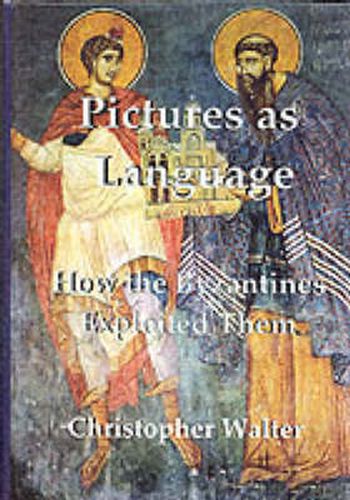Readings Newsletter
Become a Readings Member to make your shopping experience even easier.
Sign in or sign up for free!
You’re not far away from qualifying for FREE standard shipping within Australia
You’ve qualified for FREE standard shipping within Australia
The cart is loading…






Christopher Walter, in his research on Byzantine art, has been particularly concerned by the significative value of iconography. The Byzantines, perhaps more than other cultural groups, were aware that pictures could speak. The form and content of their message is explored here in a series of twenty-six articles, together with the use to which this message could be put. The first group of six articles is concerned with manuscript illustration. The second group of six articles shows how pictures could be used for ecclesiological purposes, not only to set out the universal mission of the Church. and its relations with political authorities, but also the relations of a local Church with the ensemble. A third group of three articles is concerned with the use of pictures in order to instruct the faithful on the raison d'etre of the liturgy. The fourth group of seven articles studies the use of pictures to make better known to the populace the role of saints in the life of terrestrial men. Finally two articles document the use of iconography on apotropaic objects like amulets. In an epilogue the author brings up to date the bibliography of the subjects studied in these articles.
$9.00 standard shipping within Australia
FREE standard shipping within Australia for orders over $100.00
Express & International shipping calculated at checkout
Christopher Walter, in his research on Byzantine art, has been particularly concerned by the significative value of iconography. The Byzantines, perhaps more than other cultural groups, were aware that pictures could speak. The form and content of their message is explored here in a series of twenty-six articles, together with the use to which this message could be put. The first group of six articles is concerned with manuscript illustration. The second group of six articles shows how pictures could be used for ecclesiological purposes, not only to set out the universal mission of the Church. and its relations with political authorities, but also the relations of a local Church with the ensemble. A third group of three articles is concerned with the use of pictures in order to instruct the faithful on the raison d'etre of the liturgy. The fourth group of seven articles studies the use of pictures to make better known to the populace the role of saints in the life of terrestrial men. Finally two articles document the use of iconography on apotropaic objects like amulets. In an epilogue the author brings up to date the bibliography of the subjects studied in these articles.